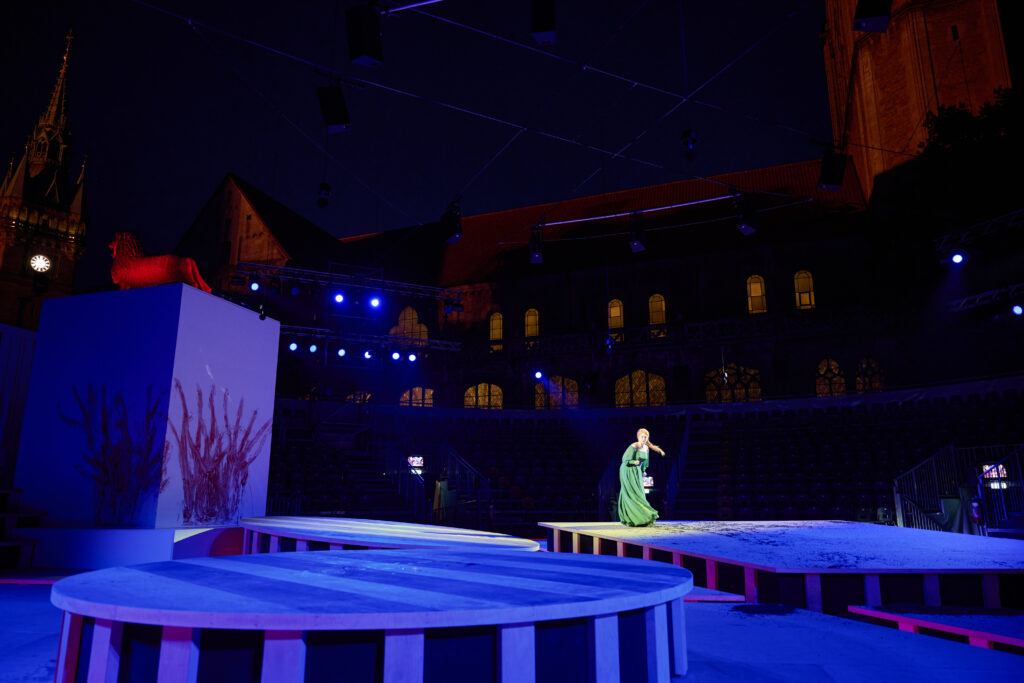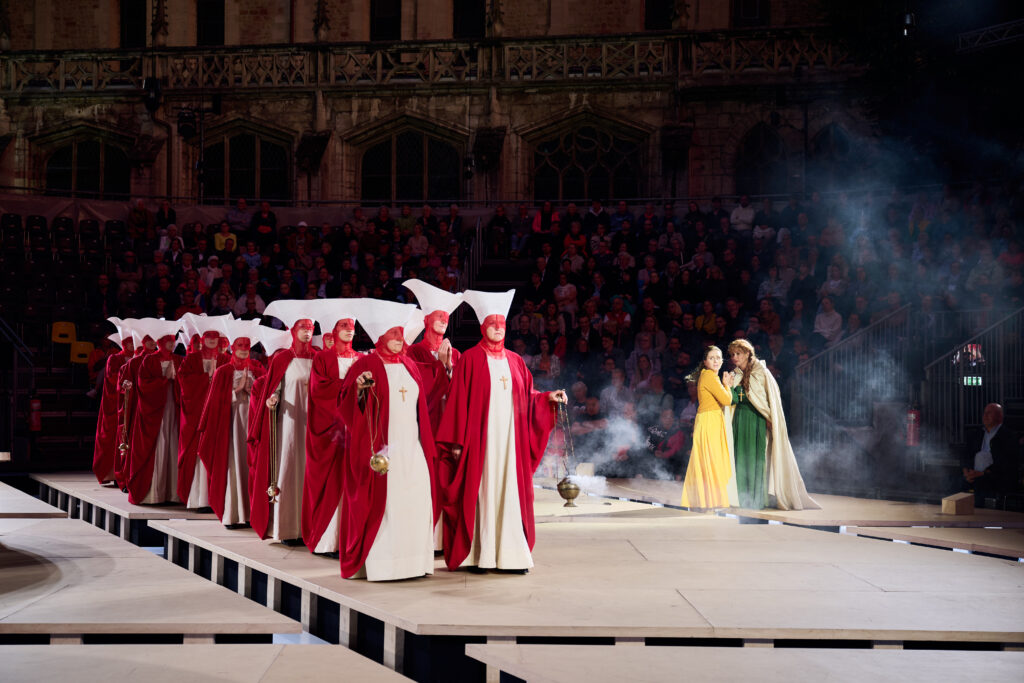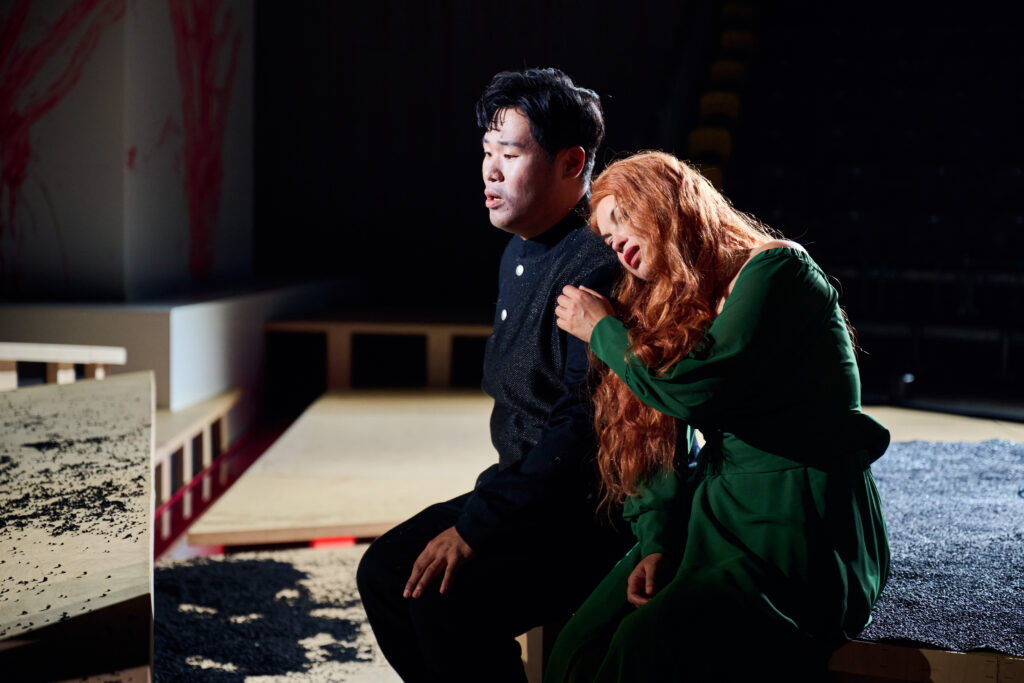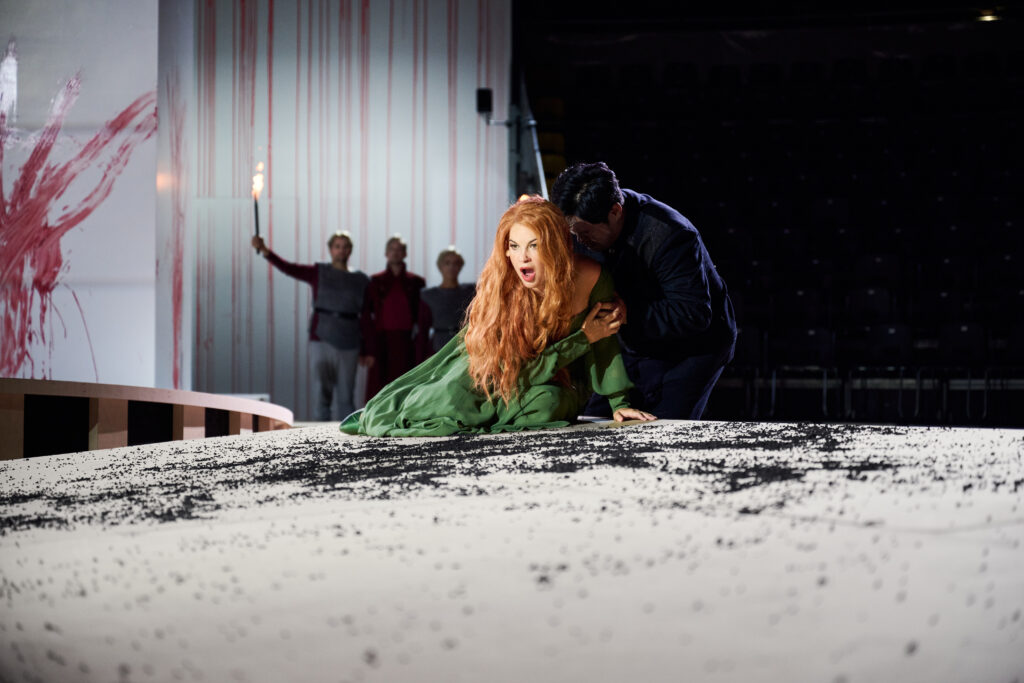At Braunschweig’s ‘Burgplatz Open Air’, Jan Eßinger‘s interpretation of ‘Troubadour’ beautifully incorporates the medieval ambience of the surroundings. The choirs shine even without acoustic amplification, and the singers create a dramatic pull, especially towards the end.
In his production for the Staatstheater, Eßinger presents Verdi’s ‘Trovatore’ as a play of contrasting characters. For the circular arena in front of the Braunschweig Lion Monument, Marc Weeger has provided the stage ground with a lot of wood carving, on which three sloping turntables offer the protagonists a wobbly platform.

This reduction is good for the extensively intricate storyline about a power struggle, uprising and civil war in 15th century Spain, even if it means that Verdi’s political intentions fade into the background. He had supported the Risorgimento in 19th century Italy, and the aspect of the struggle for independence could very well and justifiably be at the centre of a directorial interpretation in ‘Trovatore’.
On the Burgplatz, however, politics is left out of the equation: The triangular relationship between Leonora, Manrico and Count Luna thus takes centre stage. Manrico and Luna are united adversaries in their antagonism, as Natascha Maraval has tailored identical costumes for the rival brother and sister, which differ in complementary colours. The drama is complemented and intensified by the tragic role of Azucena. And here, too, it makes sense that the director is focussing on the emotions and human worldliness in the face of imminent death at the stake.
At this point, Verdi’s music also goes into depth, whereas previously the superficial effects of the arias and choral passages often predominated. In the finale, Eßinger has the protagonists lie alone on the turntable across the wooden floor, which is now pierced by red bloodstreams. The lion of Brunswick is illuminated in red and the blood runs down the white wall behind it.
A contrast like day and night: while the setting appeared inconsistent and unfinished in light woodwork until the intermission in the bright sun, the darkness after the interruption immerses the scenery in the appropriate ambience.

The inclusion of the medieval surroundings is particularly impressive: the neighbouring cathedral is illuminated in red to accompany the orchestral organ, and the imprisoned troubadour Manrico sings from Dankwarderode Castle, which is illuminated in red from the outside. Kwonsoo Jeon sings the title role in a steady, expressive tenor. Well-founded in the low register and securely intoning right up to the high notes, his role debut is very convincing.

The chorus (rehearsed by Georg Menskes and Johanna Motter) is particularly vivid and versatile, providing a solid bench and support for the premiere evening from outside, inside and from the audience rows. Matija Meić plays Count Luna, whose natural portrayal of anger, jealousy and desire for revenge with a round, warm baritone lends the role a special malice. Leonora is sung by Cristiana Oliveira with a hauntingly dramatic outburst, while the lyrical passages in delicate piano are extremely nuanced.

Nora Sourouzian is convincing as Azucena, both in terms of acting and singing, with great expression in her confident mezzo. In the other roles, Isabel Stüber Malagamba as Ines is well cast with a clear, bell-like mezzo and Rainer Mesecke as Ferrando with a dark bass.
Srba Dinić on the podium of the Braunschweig State Orchestra supports and accompanies the ensemble of singers attentively and precisely. Enthusiastic applause for all involved at the end.